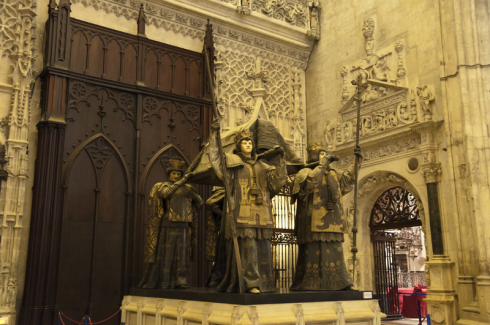In May, 1505, [Christopher Columbus] set out for the court of the Catholic King. The glorious Queen Isabella had passed to a better life the previous year. Her death caused the Admiral much grief; for she had always aided and favored him, while the King he always found somewhat reserved and unsympathetic to his projects. This was clearly shown by the reception that His Majesty accorded him. He received him courteously and professed to be restoring all his rights and privileges, but it was his real design to take them all away…. His Highness and the serene Queen had dispatched the Admiral on his voyage of discovery. Now, however, that the Indies were giving signs of that which they were to become, the Catholic King begrudged the Admiral the large share that he had in them by virtue of his capitulations with the Crown. The King wished to regain absolute control over them and dispose as he pleased of the offices that were only the Admiral’s to grant. He therefore proposed to negotiate a new capitulation with the Admiral, but God would not permit it, for at that very time the most serene King Philip I came to the throne of Spain. And even as the Catholic King departed from Valladolid to receive him, the Admiral, who was much afflicted by the gout and by grief at seeing himself fallen from his high estate, as well as by other ills, yielded up his soul to God on the Day of the Ascension, May 20, 1506, in the city of Valladolid….
[His body was afterwards borne to Seville and buried in the principal cathedral of that city with funereal pomp. By order of the Catholic King, over his tomb was placed an epitaph in the Spanish language that read:TO CASTILE AND LEÓN
COLUMBUS GAVE A NEW WORLD
Short Stories on Honor, Chivalry, and the World of Nobility—no. 599










